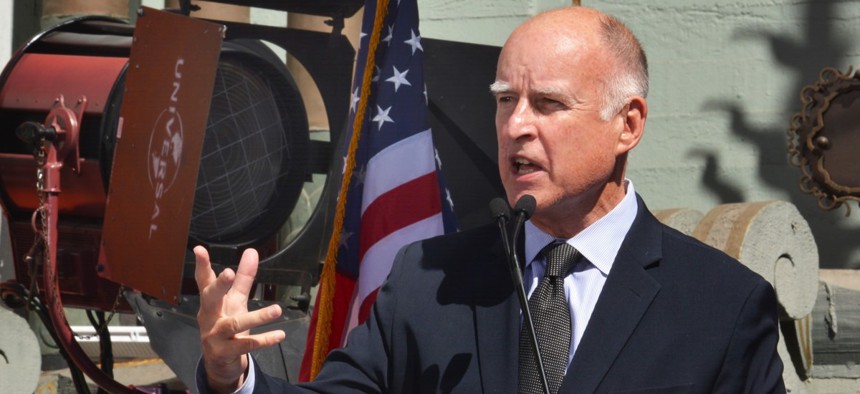California Extends the Ballot to Jails

California Gov. Jerry Brown.

Connecting state and local government leaders
Governor Jerry Brown’s decision to allow some incarcerated people with felonies to vote reflects a growing national challenge to felony disenfranchisement.
Californians in county jails for felony offenses will be able to vote next year,thanks to a new bill passed by the state legislature and signed by Governor Jerry Brown on Wednesday. The bill—introduced by Assemblywoman Shirley Weber, a Democrat—is part of a growing nationwide liberal push against felony disenfranchisement for those in and out of prison.
Among supporters, the bill has been presented as a way to reintroduce thousands of people in county jails in California back to civic life, while critics, mostly Republicans have framed re-enfranchisement efforts as a cynical partisan exercise designed to help Democrats win elections.
During a floor debate over the bill, Weber argued that “civic participation can be a critical component of re-entry and has been linked to reduced recidivism.” Her argument draws on a body of evidence showing that restoration of civil rights to people with felonies can reduce recidivism, including a study by the Florida Parole Commission.
Among liberals nationwide, that rhetoric has generally extended mostly to people with felonies who have already completed jail or prison terms, instead of those still incarcerated. In February, Maryland General Assembly Democrats overrode a veto by Governor Larry Hogan to approve a bill extending the ballot to over 40,000 people with felonies who were no longer imprisoned but were still under probation or parole.
In Virginia, Democratic Governor Terry McAuliffe issued a surprise executive order in April that automatically re-enfranchised non-incarcerated people with felonies, whereas before they would have had to apply individually to his office for restitution regardless of probation or parole completion. After that order was overturned by Virginia courts, his office sent mailers out to individually grant voting rights to the 13,000 or so people with felonies who had registered to vote under the authority of his order.
In each of those states and California, Republicans have advanced party-line arguments against extending the right to vote to more people with felonies: that loss of civil rights is deserved punishment and that people with felonies disrupt elections. They have also argued that people with felonies are more likely to vote Democratic, so extending voting rights to them confers a partisan advantage to Democrats. In August, Virginia GOP Chairman John Whitbeck said in a statement that “the Governor has decided that he can get around the Supreme Court’s ruling with a simple ‘mail merge’ function, and in the process print his way to a victory for Hillary Clinton.”
While Hispanic and black people that make up more of the Democratic demographic base are much more likely to be incarcerated and disenfranchised, it is not yet known exactly how allowing them to vote impacts party balance of power in elections, if newly-enfranchised people register at all.
California is dominated by the Democratic Party and liberal coalitions in many elections, but solid blocs of voters in county jails could still tip the scales for some local races. But any partisan advantages conferred are likely simply reversals of a long legacy of felony disenfranchisement as a political weapon: The origins of felony disenfranchisement in many states as a way to stop people of color from voting and disrupting statewide racial and party balance are well documented.
California now joins the states of Maine and Vermont—along with the territory of Puerto Rico—in allowing some incarcerated people the right to vote. Maine, Vermont, and Puerto Rico have no restrictions at all, whereas people in state prisons in California are still disenfranchised. Along with those places, California is now part of an experiment to move towards expanding the right to vote, rather than restricting it.
Vann R. Newkirk II is a staff writer at The Atlantic, where this article was originally published.

NEXT STORY: Evacuation Orders, State of Emergency Declarations Made in Advance of Hurricane Matthew




